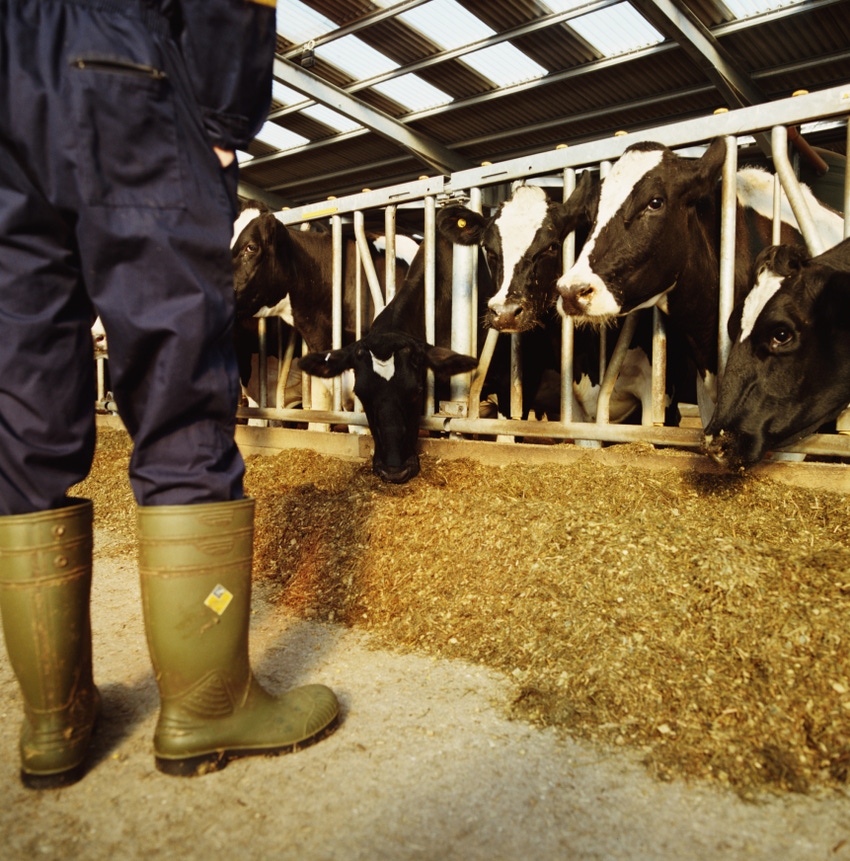Industry stakeholders have through March 31 to comment on proposed changes.

The National Dairy Farmers Assuring Responsible Management (FARM) Program, the dairy industry’s on-farm quality assurance program, has released proposed Animal Care Version 4.0 standards for input from industry stakeholders. Feedback is to be submitted now through March 31.
Currently, 98% of the U.S. milk supply participates in FARM, an initiative developed as part of dairy’s commitment to producing the highest quality milk with integrity. Its animal care program standards are revised every three years to reflect current science and best management practices.
“The FARM Animal Care comment period is an important opportunity for stakeholders to advance our goal of encouraging the highest standards of animal care and herd management,” said Jim Mulhern, president and chief executive officer of the National Milk Producers Federation (NMPF). “We are excited to work with industry partners in this next step.”
Standards, rationale and accountability measures behind the proposal have been reviewed and revised by the FARM Animal Care technical writing group made up of dairy producers, veterinarians, animal scientists and industry personnel. Before being released for comment, the NMPF animal health and well-being committee reviewed and provided feedback into the proposed changes.
Version 4.0 changes
Emily Yeiser Stepp, senior director of the FARM Program, told Feedstuffs nothing is dramatically changing from a standards standpoint in the latest version but that the primary changes are more from an administrative aspect. She also emphasized that, at this point, these are only proposed changes.
Currently, items under the mandatory corrective action plans are for a veterinarian client patient relationship (VCPR) to be established, employee training and a ban on tail docking. Previously, producers were given one year to resolve any issues associated with these items, but the latest version has decreased the timeframe to 9 months, except for tail docking, which now must be immediate.
In Version 4.0, Yeiser Stepp said that any producer who continues to tail dock will be placed on immediate probation and face potential suspension from the program if they choose to continue docking tails.
In regard to the timeframe adjustment, Yeiser Stepp said it has been observed that if producers have not met minimum standards initially, they are typically getting issues resolved in close to five and a half months.
“The technical writing group and animal health committee felt very comfortable bumping that from a year to 9 months with that trend from Version 3.0,” she said.
Training for employees will also remain one of the minimum standards. This includes stockmanship training for anyone with animal care responsibilities. Calf care as well as non-ambulatory cow, euthanasia or culling responsibilities will also require documentation, Yeiser Stepp noted.
In the latest version, non-ambulatory practices and protocol as well as euthanasia practices and protocols will also be moved into the 9-month window. These were previously in the continuous improvement timeframe that provided three years, Yeiser Stepp explained.
Changes have also been proposed for disbudding horns on calves. The program is now requiring that this practice be done prior to 8 weeks of age. This new change will also fall within the 9-month timeframe for producers to comply.
Version 4.0 also includes proposed changes to the second priority level, called the continuous improvement plans, which provides producers three years to make changes.
In this tier, the latest version would require a calf care protocol be in place. Specific to disbudding, Yeiser Stepp said a veterinarian must sign off if pain management is used in the process, or if pain management isn’t being utilized.
The three-year tier also includes that producers must keep written drug treatment records. “In version 3.0, we didn’t have any type of improvement plan surrounding drug treatment records,” Yeiser Stepp said, adding that because of federal regulations, this could now be included in the three-year timeframe.
Animal observation will remain in three-year window, but the latest version reintroduces broken tail scoring, Yeiser Stepp relayed. “It helps to identify where issues are happening.”
A new addition in the three-year tier is the acknowledgement of continuing education of family labor on farms. Yeiser Stepp said documenting this will help highlight the efforts of the owner/operators.
“We really want to just capture the continuing education that our family laborer is doing, as well,” she said.
Additional new standards proposed include topics such as lighting, worker safety, biosecurity and emergency action plans, but Yeiser Stepp said these have been proposed to maintain the program’s ISO certification.
“While we had some verbiage around that in Version 3.0, we didn’t have a specific standard. So, we needed to incorporate that to maintain that certification.”
Further, she noted that none of these items trigger any type of accountability.
One last standard proposed is a reintroduction of an item that was in Version 1.0 about capturing data around daily exercise. Essentially, the standard seeks to capture whether animals are getting daily exercise, Yeiser Stepp said.
Comment period
The public may submit comments through March 31, after which the technical writing group and the NMPF animal health and well-being committee will review and consider revisions based upon the comments. From there, final proposed standards will be submitted for approval by the NMPF board in June.
The FARM Program encourages all those involved in the dairy supply chain to participate. To review proposed standards and provide feedback, please visit https://nationaldairyfarm.com/animal-care-open-comments/. FARM Version 3.0 will remain in effect until Dec. 31, 2019.
About the Author(s)
You May Also Like



.png?width=300&auto=webp&quality=80&disable=upscale)

